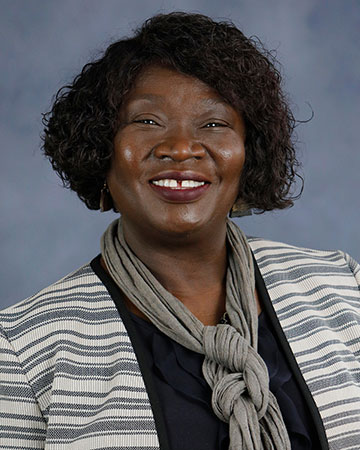

SUNY Graduate Research and Creative Activities Conference
May 2nd, 2025 – Virtual
SUNY GRC Agenda 2025:
- 10:00am – 10:05am: Opening Remarks – Keith Landa, Chair of the University Faculty Senate, Trustee, SUNY Purchase
- 10:05am – 10:10am: Conference Welcome and Remarks – Dr. Isabelle Bichindaritz, SUNY Oswego
- 10:10am – 11:00am: Keynote Speaker – Dr. Ibipo Johnston-Anumonwo, Cortland University, Distinguished Research Professor
- 11:10am – 12:10pm: Panel #1: Progress in Equity and Inclusion Through Research – Moderated by Professor Isabelle Bichindaritz, GAPRC Committee Chair
- 12:10pm – 12:40pm: Lunch Break
- 12:40PM ‐ 1:40pm: Panel #2: Generative AI Promises and Challenges – Moderated by Keith Landa, Chair of the University Faculty Senate
- 1:50pm ‐ 3:20pm: Poster Presentations
- Poster Session #1 ‐ Biomedical Informatics
- Poster Session #2 ‐ Computer Science & Engineering
- Poster Session #3 ‐ Diversity, Equity, and Inclusion
- Poster Session #4 ‐ Education
- Poster Session #5 ‐ Environmental Science
- Poster Session #6 ‐ History & Economics
- Poster Session #7 ‐ Medicine
- Poster Session #8 ‐ Mental Health & Psychology
- 3:20pm – 3:30pm: Conference Closing – Professor Sweta Das, SUNY Optometry
Keynote Speaker announced!
Distinguished Professor Ibipo Johnston-Anumonwo

Dr. Johnston-Anumonwo has a Bachelor of Education in Teacher Education from the University of Ibadan, Nigeria, and a Master of Education with a concentration in international development from Harvard Graduate School of Education. She was awarded a Ph.D. from Clark University, where her dissertation study focused on “A Geographic Perspective on Occupational Segregation.”
Since then, she’s become an innovative scholar in academic areas that include urban geography, feminist geography and other topics related to equity and social justice — becoming recognized for her work at the statewide, national and international levels.
Her service to local groups, including the Cortland YWCA, is also of note. The organization nominated her for the 2017 Woman of Achievement Award through Zonta International.
For almost 20 years, Johnston-Anumonwo has served as a leader for The College Board’s AP Human Geography exam evaluation, including a position on the seven-member Test Development Committee from 2003 to 2007. In 2016, she was recognized nationally by the Association of American Geographers (AAG) with the organization’s Distinguished Teaching Honors. At the time, she was one of only seven people to receive the award.
She’s also earned a fellowship as part of the Carnegie African Diaspora Fellowship Program, which recognizes exemplary projects at African higher education institutions. Through that work she was able to collaborate with faculty at African universities on sustainable urban transportation.
Contact Us
The SUNY Center for Professional Development (CPD) supports a wide range of professional development opportunities for the academic, technical, and leadership communities across the SUNY System.